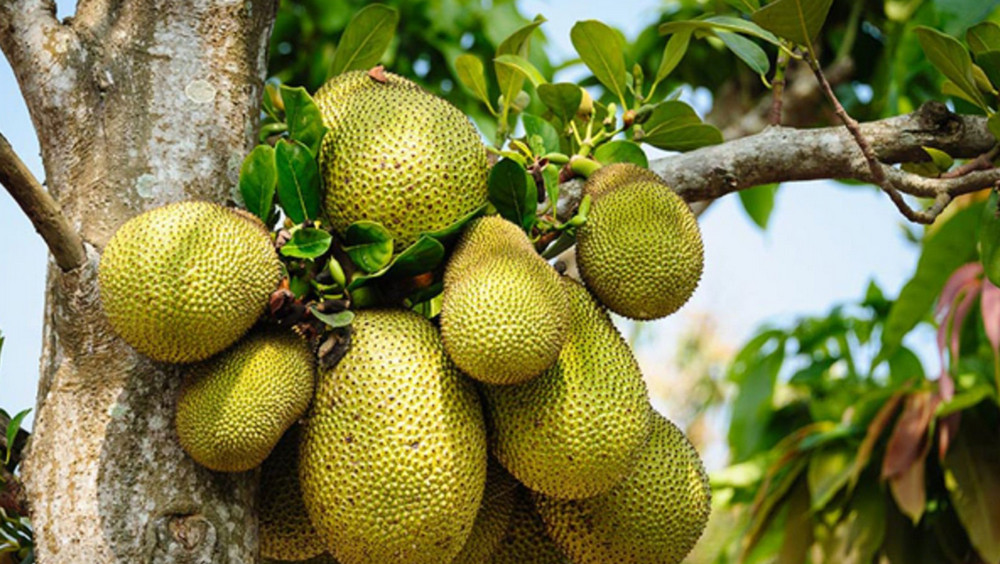In the verdant lands of the Philippines, a versatile and resilient fruit tree has long been a staple in local diets and a symbol of cultural heritage—the jackfruit, known locally as “langka.” From its humble beginnings as a backyard crop to its potential as a lucrative export commodity, the jackfruit holds a significant place in the country’s agricultural landscape, particularly in the Visayas region.
Cultural and Culinary Significance
Jackfruit is deeply ingrained in Filipino culture as a food source and a versatile ingredient in various culinary creations. Jackfruit cultivation thrives in the Visayas, particularly in Western, Central, and Eastern Visayas, with nearly half of the region’s land dedicated to its production. Traditionally, jackfruit trees were grown in backyard gardens, primarily for household consumption. The fruit serves multiple purposes: it can be eaten as a vegetable when young, enjoyed as a dessert, or processed into various culinary delights when ripe.

However, beyond its culinary uses, jackfruit offers additional benefits. The non-edible parts of the fruit, known as rags, are rich in pectin, making them valuable in jelly production. Moreover, the wood of the jackfruit tree is used to manufacture musical instruments, such as guitars, adding to its economic significance.
Untapped Potential in the International Market
While jackfruit has long been appreciated domestically, its potential in the international market remains largely untapped. Despite being exported in limited quantities, primarily as fresh fruit, there is a growing opportunity for value-added processed products. Reports indicate that as early as 1995, the Philippines earned an average of half a million dollars annually from jackfruit exports. However, this figure could be significantly higher with strategic development and market exploration.
Addressing Production Challenges
Despite its potential, jackfruit production in the Philippines faces challenges, particularly in terms of low yields and inefficient cultural management practices among farmers. Limited access to technical knowledge and skills and a focus on subsistence farming have hindered efforts to scale up production and commercialization.
Agricultural Innovations for Growth
Recognizing the need to enhance jackfruit production, the Eastern Visayas Integrated Agricultural Research Center (EVIARC) initiated a five-year on-farm technology demonstration project in Region 8. This project aimed to showcase the benefits of adopting recommended agricultural practices through on-farm demonstrations, providing farmers firsthand experience and tangible results.
Technology Adoption and Impact
The technology demonstration project focused on implementing a package of applicable technologies (PAT) tailored to local environmental conditions. Key components of the technology package included the use of asexual reproduction for planting, selective fruit thinning to promote larger and higher-quality fruits, and optimized cultural management practices.
Results from the on-farm techno demo were promising, with significant improvements observed in both technical and economic efficiency. Jackfruit trees planted using asexual reproduction bore fruits earlier, with full bearing achieved in just four years compared to the typical 5-6 years for sexually propagated trees. Moreover, productivity per tree increased substantially, with higher yields of larger and heavier fruits.
Economic Viability
While initial investments in technology adoption led to higher production costs, the increased productivity translated into greater net returns for farmers. For instance, a one-hectare jackfruit farm in Ormoc recorded substantial income over five years, demonstrating the economic viability of adopting recommended agricultural practices.
Future Prospects and Opportunities
The success of the on-farm technology demonstration project underscores the potential for scaling up jackfruit production in the Philippines. By empowering farmers with the knowledge and tools needed to adopt modern agricultural practices, the country can unlock the full potential of this versatile fruit tree. Moreover, exploring value-added processed products and expanding access to international markets can further enhance the economic value of jackfruit cultivation.
Conclusion
Jackfruit stands as a symbol of resilience and opportunity in the agricultural landscape of the Philippines. With its rich cultural heritage, diverse culinary uses, and untapped potential in the international market, jackfruit holds immense promise for economic growth and rural development. By harnessing the power of agricultural innovation and empowering farmers with the necessary skills and resources, the Philippines can position itself as a leading player in the global jackfruit industry, ensuring sustainable livelihoods and food security for future generations.
See Also:
- Nurturing Organic White Corn Farming in Ilocos Norte
- A Comprehensive Guide to Turmeric Farming and Production
- Mung Bean Farming and Production Guide
- From Seed to Supermarket: Your Guide to Onion Farming in the Philippines
- Why Onions in the Philippines are So Expensive
